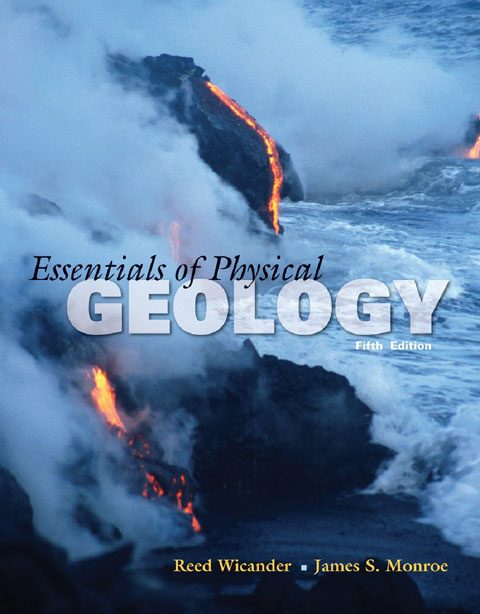
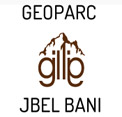
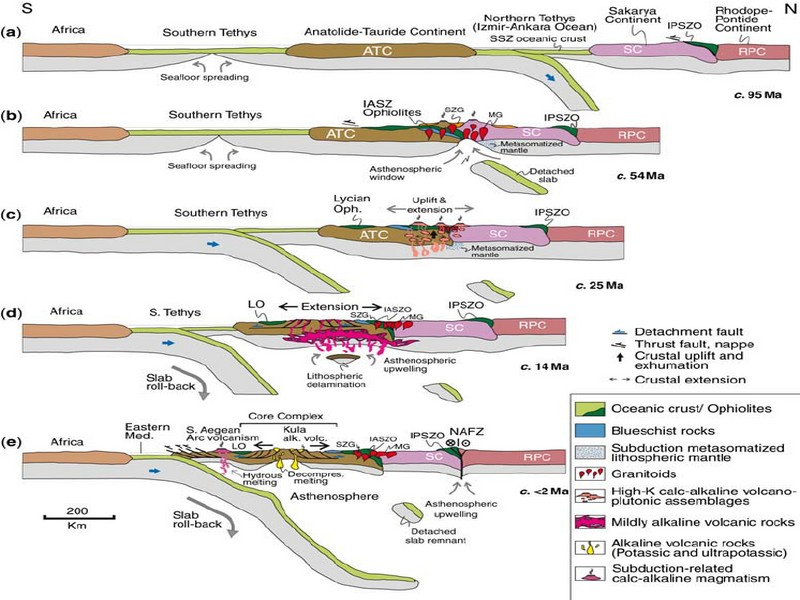
GEODYNAMIC EVOLUTION OF THE PAN-AFRICAN OROGENY
Prof. Hervé Rezeau, Prof. Cyril Chelle-Michou & Prof. Michael Calder
SEG Student Chapter of Geneva (Switzerland)
SEG Student Chapter of Montpellier (France)
Recent studies (mainly Gasquet et al. 2005) give more informations about the Anti-Atlas belt evolution. Briefly, they describe as the result of four main stages (Fig.3):
(1)A rifting event and an ocean opening north of the WAC occurred around 790-740 Ma, as it is recorded by gabbroic dykes, which have a tholeiitic affinity, exposed in slivers of ophiolite at Bou Azzer.
(2)This was followed by a subduction event, which is evidenced by calc-alkaline magmatism typical of volcanic island arc environment. The metabasite of Bou Azzer could constrain the high pressure and low temperature (T ≤ 350 and P ~ 5 kbar) metamorphism event. This event has been dated between 740- 690 Ma. The magnetic modelling of the Bou Azzer ophiolite (shown in Figure 4) could confirm the dip direction of the trench to the north.
(3)The third stage is described as an arc-continent collision corresponding with the ocean, fore and back arc basin closure. Once again, the Bou Azzer allochthonous ophiolite records this important episode that occurred between 660-690 Ma and thus during Pan-African orogeny . Although, this stage might be relatively well understood and constrained in the Bou Azzer region, it is not the case for the whole Anti- Atlas belt and more study has to be done. Partially anatectic gneisses and calc-alkaline intrusive rocks have also been described in the region associated with this third stage.
(4)The last stage is related to an extension and marine basin development. It’s by far the most important stage responsible for the formation of ore deposits. Gasquet et al. (2005) confirmed this event by analyzing and dating zircons of intermediate to felsic high-K calc-alkaline rock around 595-570 Ma. Slightly after, another magmatic event is characterized by a more alkaline series during Ediacaran times (570-545 Ma). This latest intrusions are also responsible for base metal porphyry-type mineralisation, epithermal precious metal deposit (Au-Hg Imiter; Cheilletz et al., 2002) and mesothermal Au deposit (Al Ansari and Sagon, 1997). This extensional event is thus the last important event in the Anti-Atlas belt where the brines could have migrated along normal fault and fractures and be responsible for the Imiter (Baroudi et al. 1999), Zgounder (Essaraj et al. 1998), Bou Azzer (En-Naciri et al. 1997), Tiouit (Al Ansari and Sagon 1997), and Bou Madine (Abia et al. 1999).
Figure 3: Pan-African geodynamic evolution of the Anti-Atlas during Pan-African times.WAC:West African Craton, NAA: Northern Anti-Atlas (after Levresse, 2001 modified). Gasquet et al. (2005).
Figure 4: Magnetic modelling of the Bou Azzer-El Graara ophiolite. (A): Map of the residual magnetic field of the Anti-Atlas. (1): shading direction; A–A arrows: location of the Central Anti-Atlas negative anomaly. – (B): Magnetic modelling along profile 40 east of Bleida (for location, see map (A)). The major negative anomaly A–A coincide with the ophiolite outcrops along the AAMF (compare with Fig. 2.1). Taking into account the latitude and the lack of remnant magnetization, this indicates a north-dipping ophiolitic body, as quantitatively modelled in (B) (Soulaimani et al. 2006)
GEOCHEMISTRY
The Ediacarian rocks from the Pan-African orogeny (595 to 545 Ma) were analyzed for major and trace elements in order to recognize different compositions relative to their age. Three main series are recognized (Fig.5): (1) the granite, granodiorites and tonalites of the oldest series (595-570 Ma) which has a metaluminous (CaO+Na2O+K2O>Al2O3), high-K calc-alkaline affinities (Figure 5A), (2) the second series is slightly younger and overlap the other series with an age range of 570-545Ma and it consists of rhyolitic-ignimbritic lava flow or domes and dykes that are often altered (sericitisation, carbonation, hematisation, albitisation, chloritisation) (Figure 5A). These series have high-K calc- alkaline to shoshonitic affinities. (3) The last series occurred during the Ediacarian period (530Ma) and is defined by trachyte sill (Aghbar) and syenite (Jbel boho; Ducrot and Lancelot, 1977). This serie has a much higher Na2O+K2O (8.07%); a Na2O/K2O ratio of 0.35 and a high REE content, all of which plot in the alkaline-shoshonitic serie (Figure 5B).
The Rb-Sr and Sm-Nd isotope analysis of the two first magmatic series, from 595 to 545 Ma, yield the same Sr and Nd initial isotopic ratio and was interpreted as a mixing of mantle and lower crustal sources. However, the Re-Os system analysis on the sulphide phase and silver minerals clearly indicated a mantle source. (Gasquet et al. 2005).
Figure 5: K2O–SiO2 plots of selected Ediacaran calc-alkaline to alkaline plutonic (a) and volcanic (b) rocks and of the Cambrian Aghbar trachytic sill (star) of the Anti-Atlas belt (Le Maitre et al., 1989). Unaltered(LOI < 3%) rocks are from this study and other studies (see refernces in Gasquet et al., 2005)
OCEANIC CORE COMPLEX
The oceanic remnants are described as a Harzburgite Ophiolite Type (HOT) which is typical of a fast spreading mid-ocean ridge (A. Michard et al. 2008). The reconstructed cross-section (Fig. 6) shows that no pillow lavas are drawn although they are described in the Bou Azzer Group. The Bou Azzer – Siroua oceanic complex is known only as a discontinuous strip along the Anti-Atlas Major Fault (see Fig. 1) and represents nearly all the Neoproterozoic juvenile magmatic rocks known in the Anti-Atlas. The ophiolites and arc units have been obducted in a south-vergent motion thrust above a basal mélange onto the northern WAC margin. The typical high-pressure low-temperature mineral association of the blueschist facies has recently been redefined and correspond to crossite/Mg-riebeckite-bearing which corresponds to HP-greenschist condition (5-6 kbar, 500-550°C; Bousquet et al. 2008).
Figure 6: Stratigraphic column of the Khzama ophiolite, Sirouna massif, after Wafik et al (2001), redrawn at regional scale (including Bou Azzer). Gabbroic rocks are c. 760-750 Ma old, whereas the juvenile leucogranites and quartz diorites. (Thomas et al. 2002, 2004).From Gasquet et al. (2008).
Source web : Prof. Hervé Rezeau, Prof. Cyril Chelle-Michou & Prof. Michael Calder unige.ch
Les articles en relation
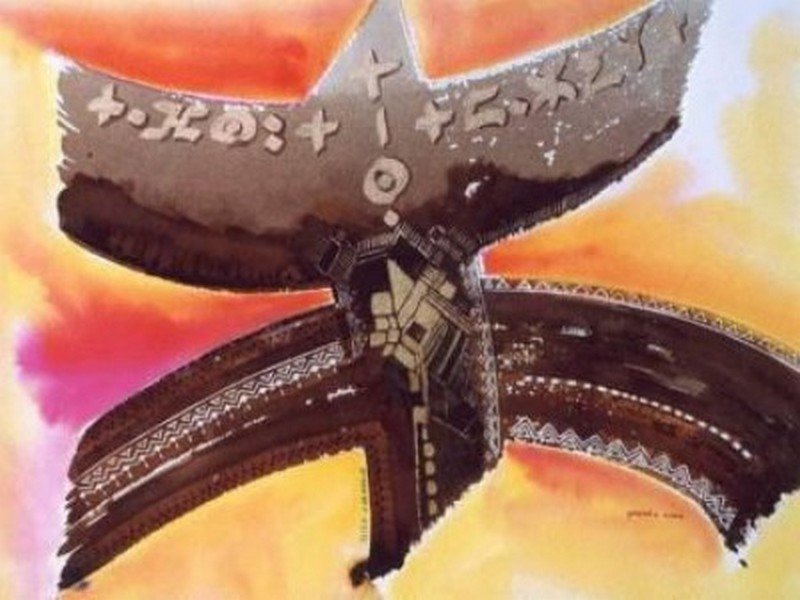
La culture Berbère au Maroc
La culture Berbère au Maroc Depuis 2011, la nouvelle constitution marocaine officialise la langue amazighe et depuis 2001 sous l’impulsion de Mohamed VI, un institut royal de la culture amazighe a vu le jour. Les Ber
Savoir plus...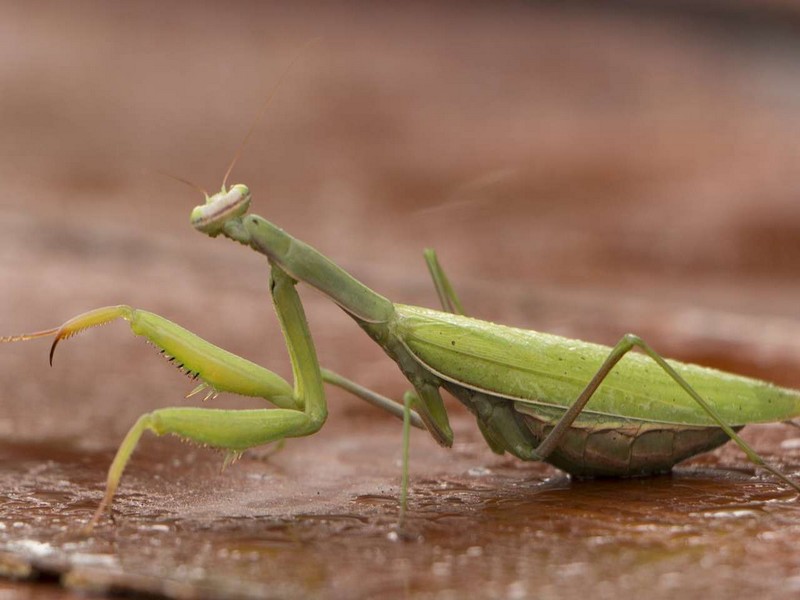
Vie sexuelle des mantes religieuses : elle le décapite puis se reproduit avec !
Vie sexuelle des mantes religieuses : elle le décapite puis se reproduit avec ! La mante religieuse est connue pour sa tendance à dévorer ses partenaires sexuels. Mais saviez-vous que, même décapit&e
Savoir plus...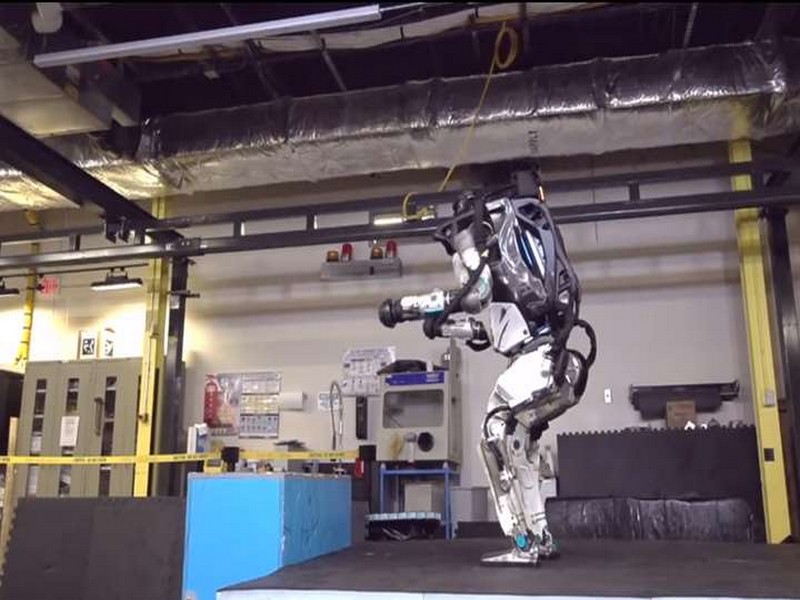
Atlas, le robot de Boston Dynamics, toujours plus étonnant et agile
Dans une nouvelle vidéo tournée par Boston Dynamics, on découvre le robot humanoïde Atlas en train d'effectuer un « parkour » démontrant ses progrès. Nous l'avions quitt&eac
Savoir plus...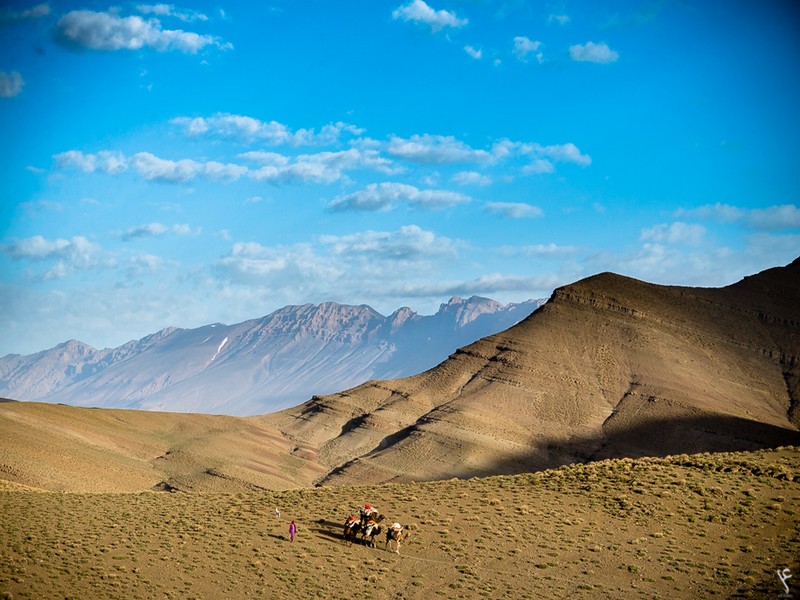
Sur la vague du nouveau Maroc
Sur la vague du nouveau Maroc Mettre le pied une deuxième fois sur le sol marocain répondait pour nous cinq à une soif de mieux connaître ce pays qui nous hante et nous attire avec ses mille couleurs, ses s
Savoir plus...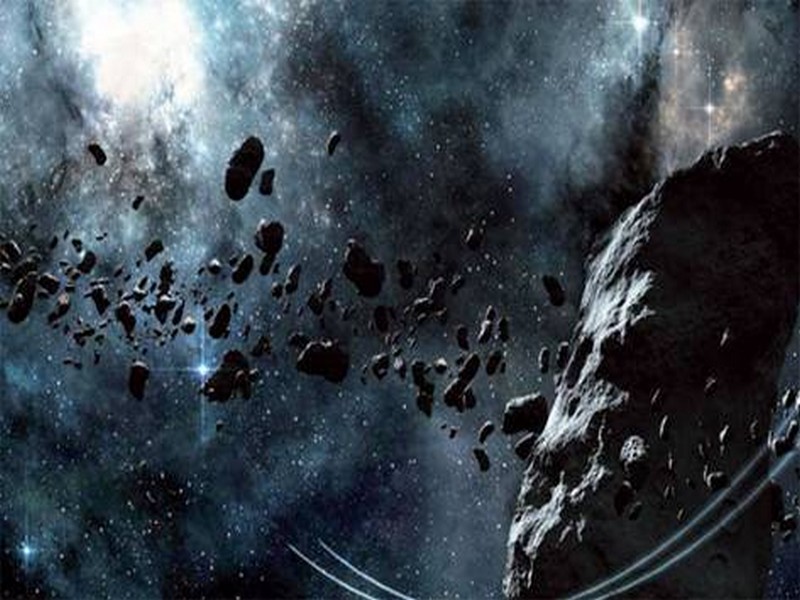
Une nouvelle météorite s’est écrasée au Maroc
Une nouvelle météorite s’est écrasée au Maroc La météorite est tombée à 15 km de Foum Lahcen, dans le désert de Tata . Mercredi dernier, les habitants de la r&ea
Savoir plus...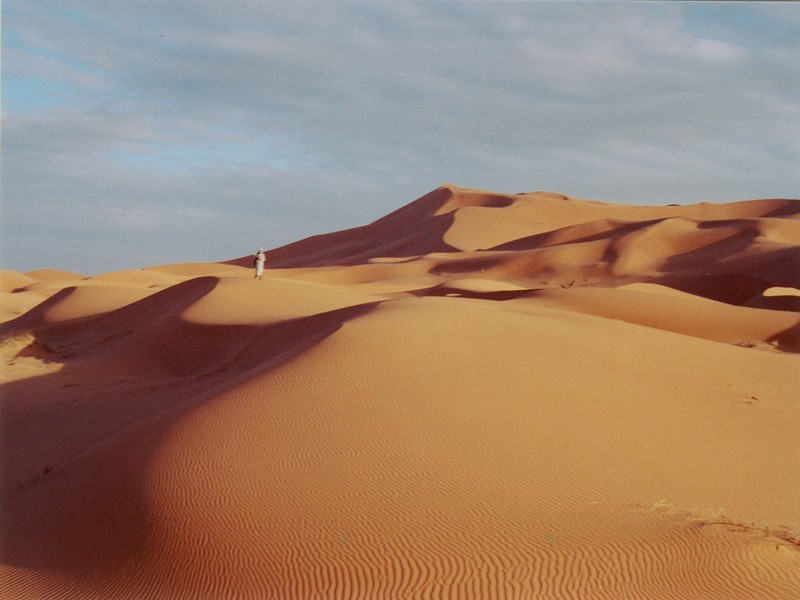
La Sabulum thérapie, les bienfaits du bain de sable
La Sabulum thérapie, les bienfaits du bain de sable Tous les étés entre les mois de mai et septembre, alors que le tourisme du désert est au point mort, les professionnels de l’hébergement de
Savoir plus...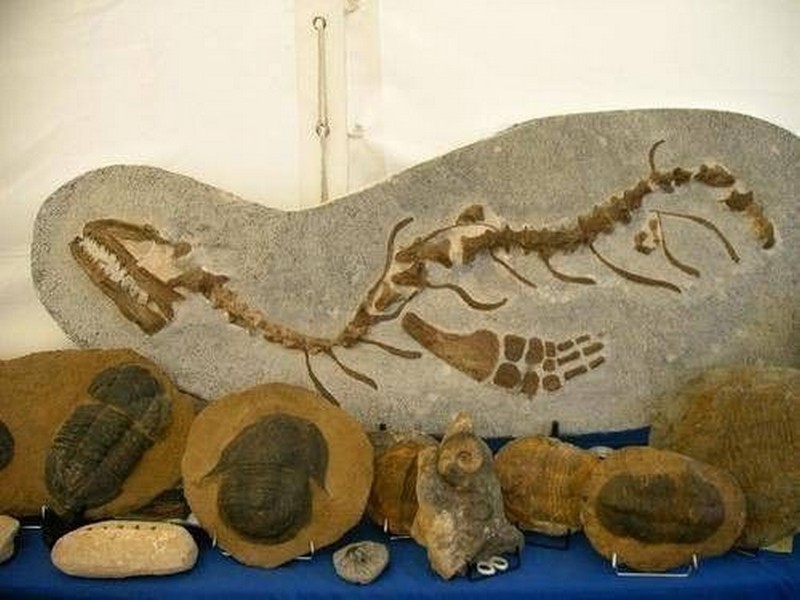
Les fossiles de l’Anti-Atlas (Géoparc Jbel Bani)
Les fossiles de l’Anti-Atlas (Géoparc Jbel Bani) Si le Maroc nous propose des paysages variés, les activités peuvent être tout autant diverses. Trekking, randonnées pédestres, spor
Savoir plus...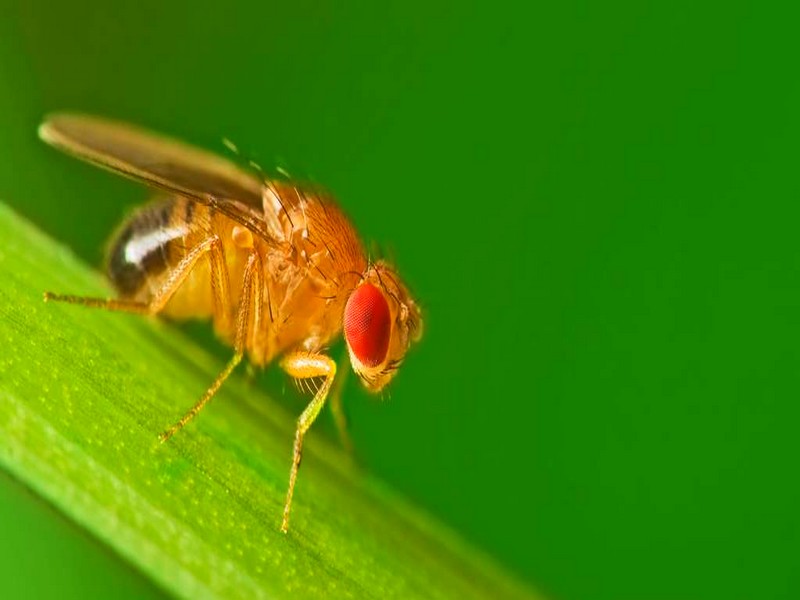
Ce que cache le cerveau d’une mouche
Ce que cache le cerveau d’une mouche Pour les non-initiés, cela ne ressemble pas à autre chose qu'à un arc-en-ciel de fils entremêlés. Mais pour les neurologues, il s'agit là d&#
Savoir plus...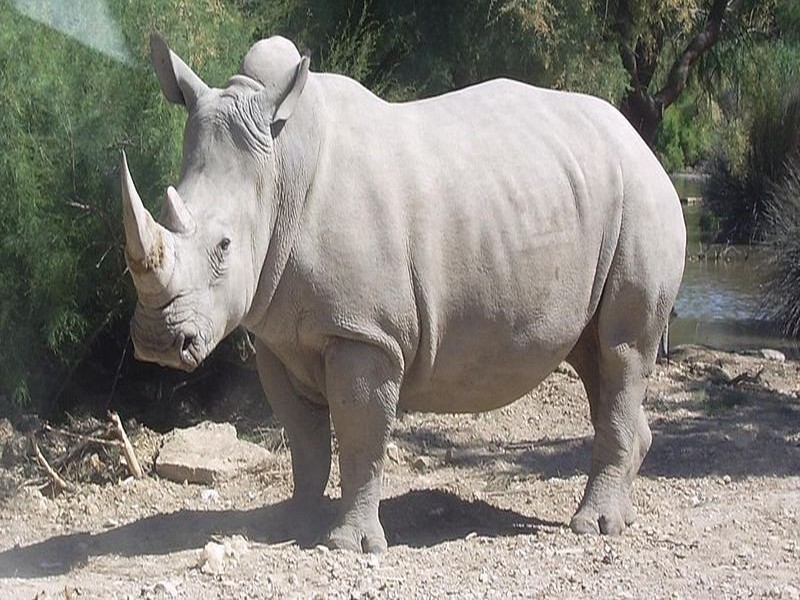
Les rhinocéros du Maroc (espèce éteinte)
Jadis, à une époque antique où la moitié sud de notre pays ressemblait plus à une savane qu’à un désert , vivaient encore des espèces aujourd’hui éteintes, qu&rs
Savoir plus...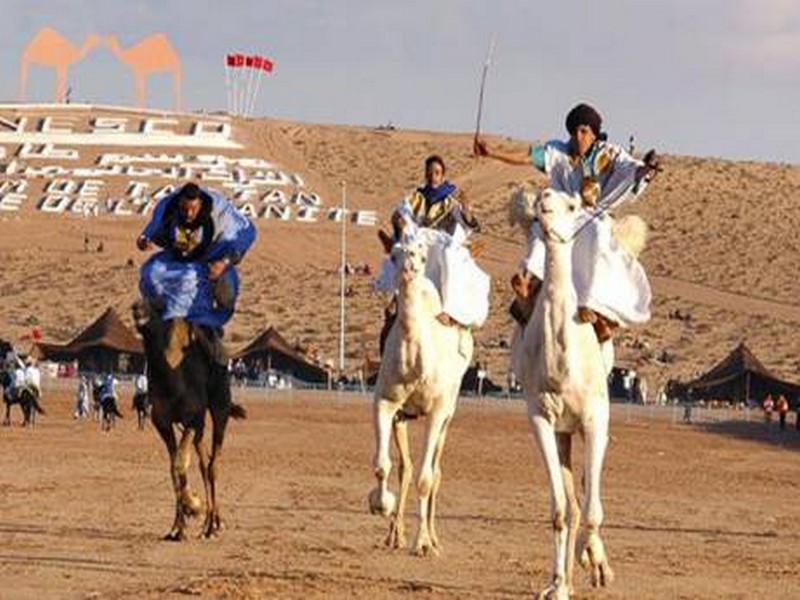
Moussems et Féstivals
Moussems et Féstivals Moussems et fêtes traditionnelles au Maroc : Moussems, fêtes musulmanes ou familiales, les festivités marocaines égrènent les saisons, rompent la monotonie quotidienne
Savoir plus...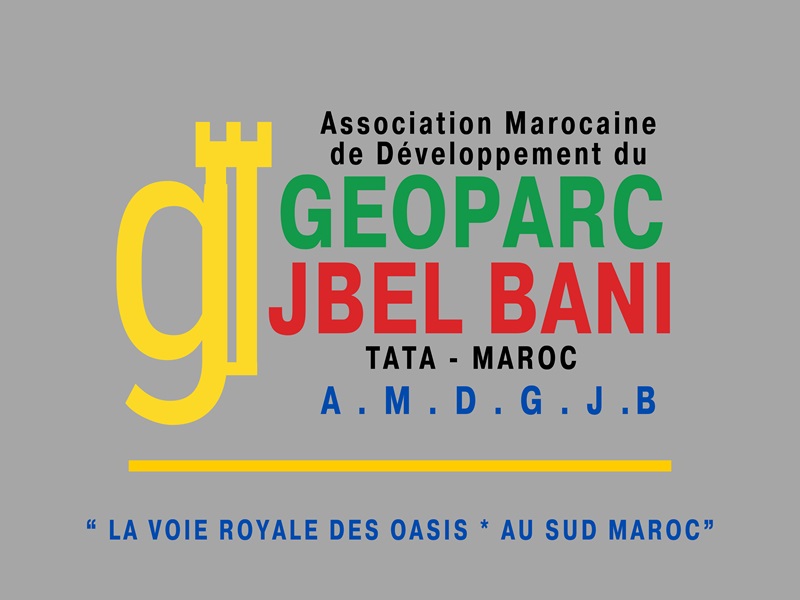
Association Marocaine pour le Développement de Géoparc Jbel Bani (AMDGJB)
Association Marocaine pour le Développement de Géoparc Jbel Bani (AMDGJB) L'AMDGJB Association Marocaine pour le Développement de Jbel Bani, en tant qu'Association Marocaine autorisation 1954-36 &
Savoir plus...Les tags en relation
En savoir plus sur " Géologie et TSGJB - AMDGJB "
Consulter les vidéos de " Géologie et TSGJB - AMDGJB " Consulter les photos de " Géologie et TSGJB - AMDGJB " Consulter les publications de " Géologie et TSGJB - AMDGJB " Consulter les éditions de " Géologie et TSGJB - AMDGJB " Consulter les communications de " Géologie et TSGJB - AMDGJB "Recherche du site
Recherche avancée / Spécifique
Géoparc et Recherche Scientifique
Le coins de l’étudiant
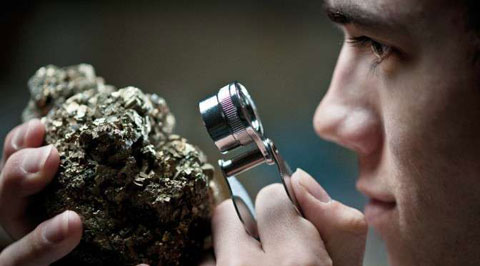

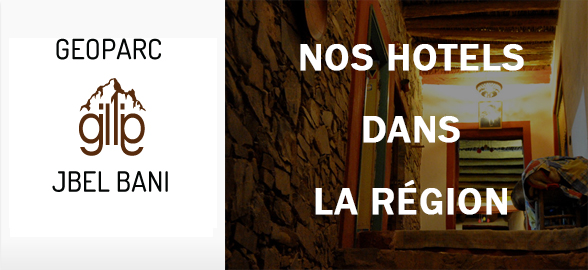
Blog Géoparc Jbel Bani
Dictionnaire scientifique
Plus de 123.000 mots scientifiques
Les publications
Géo parc Jbel Bani

Circuits & excursions touristiques
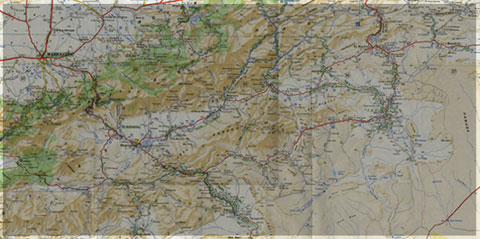
cartothéques
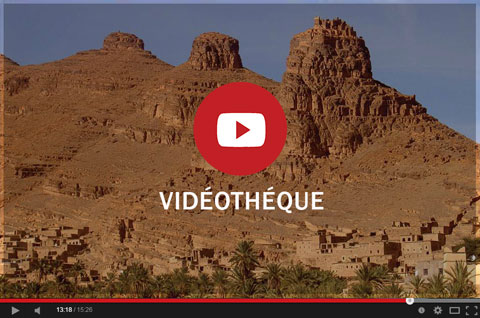
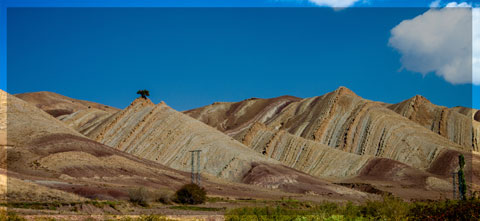
Photothéques
Publications & éditions
